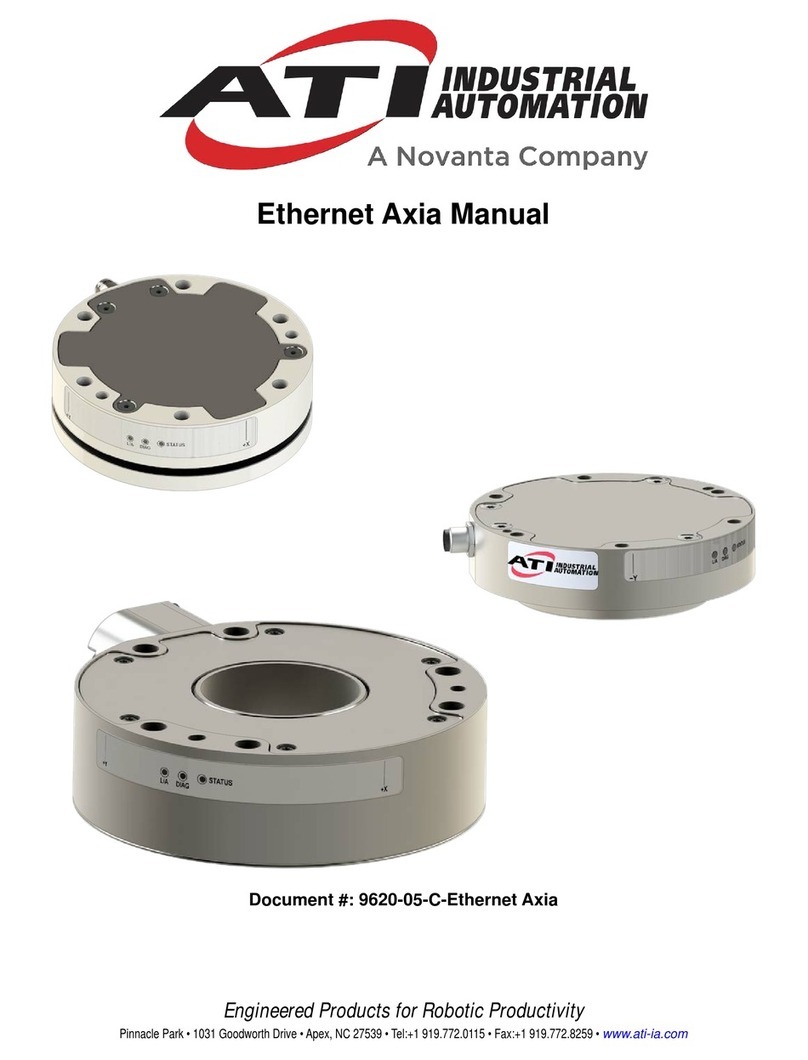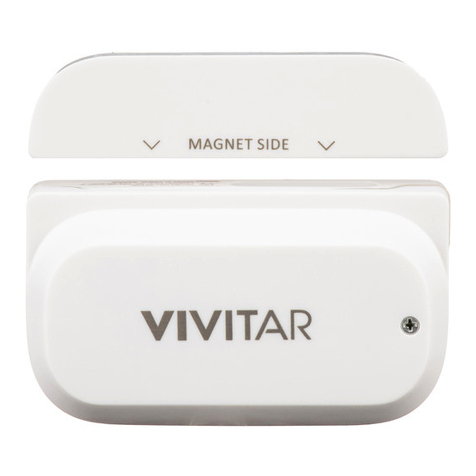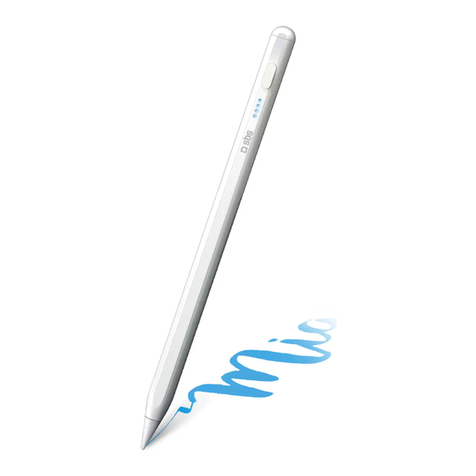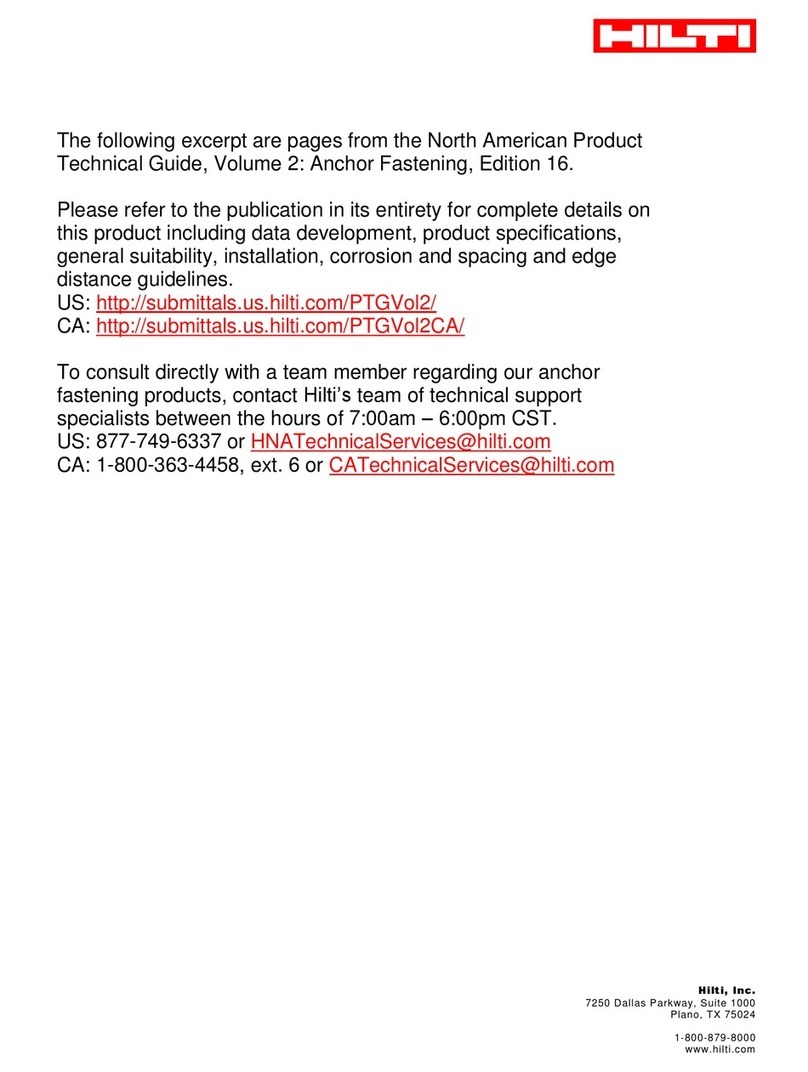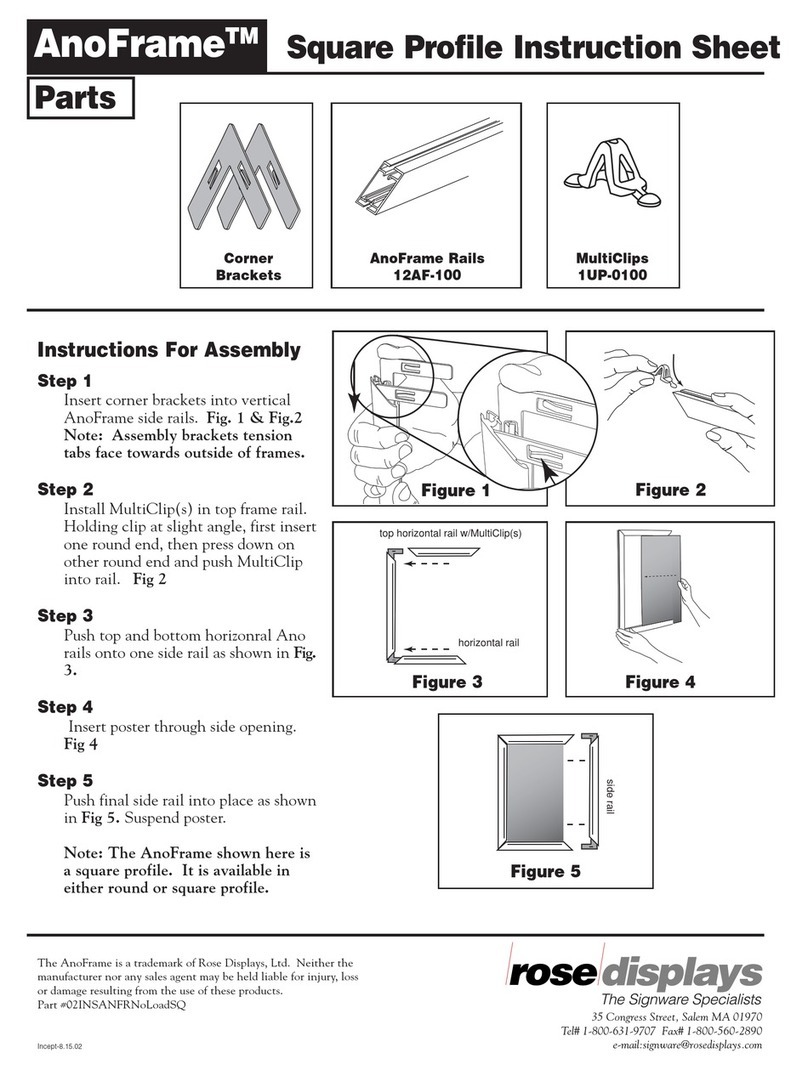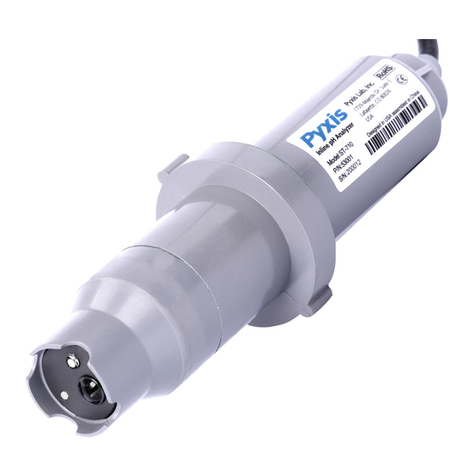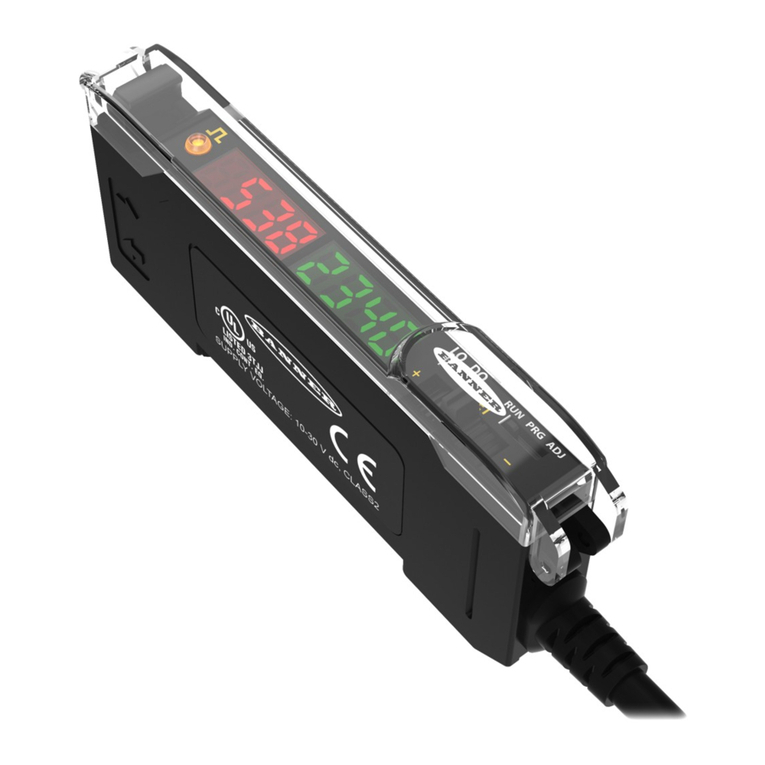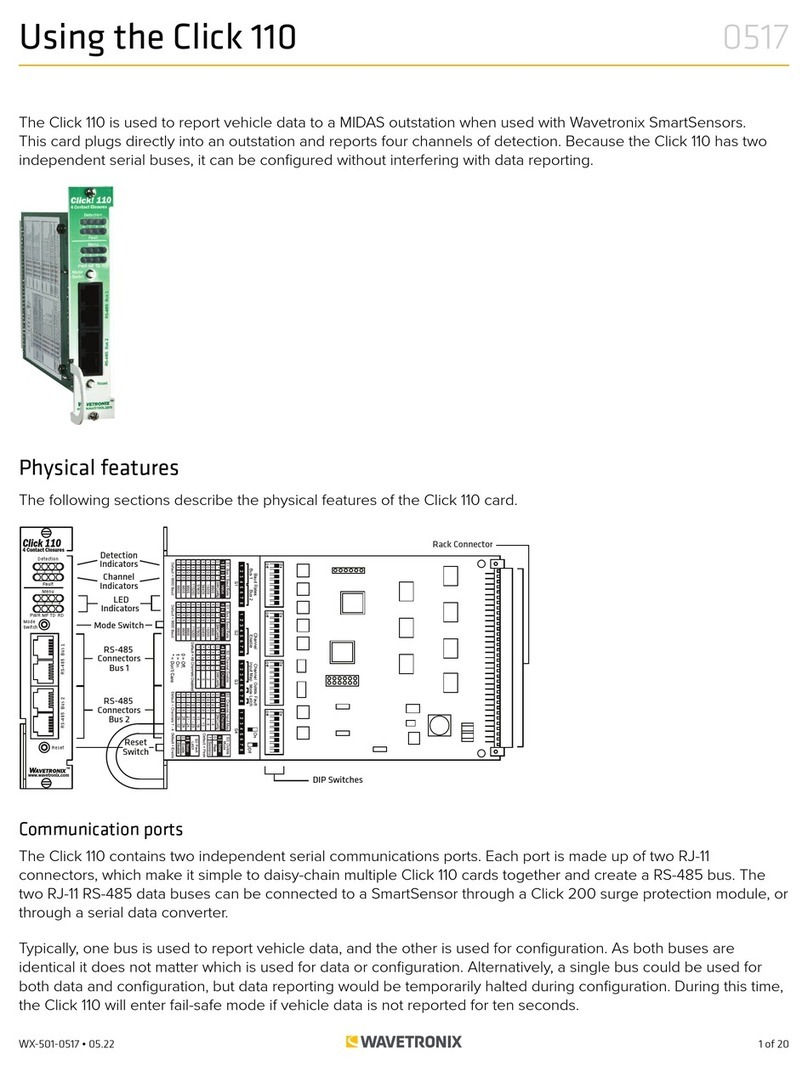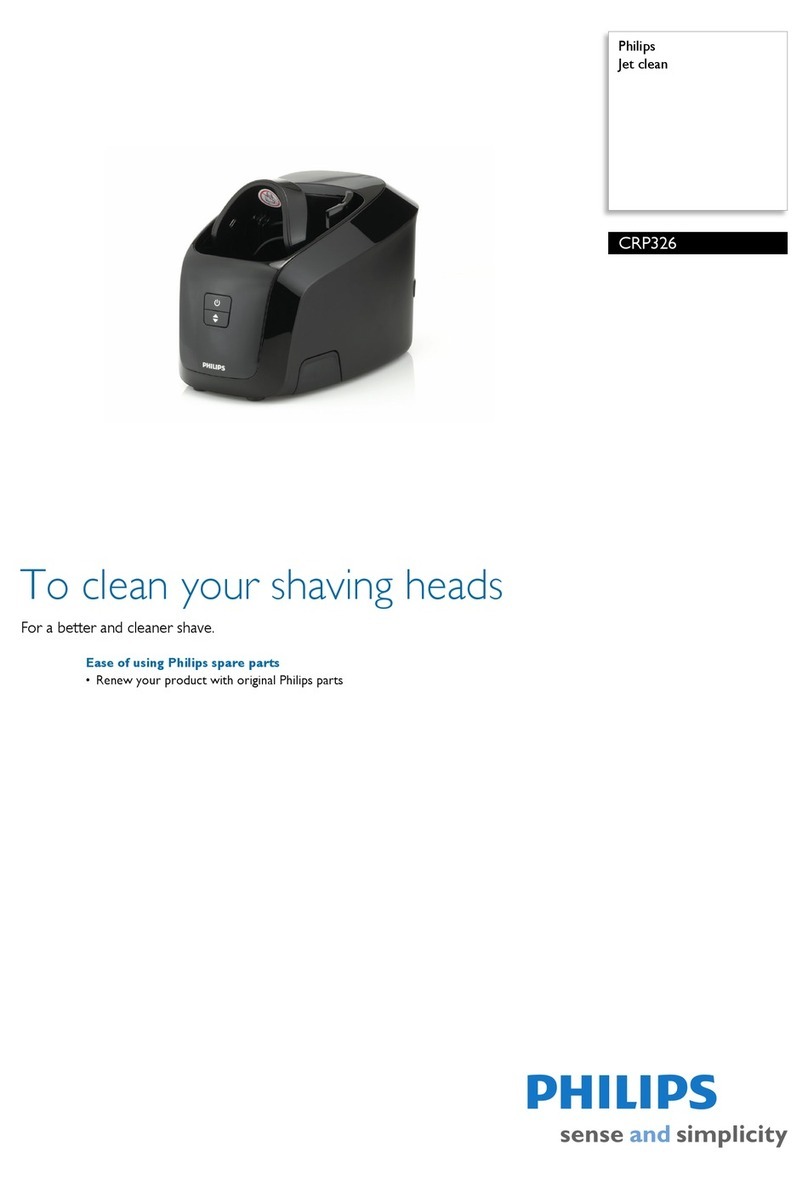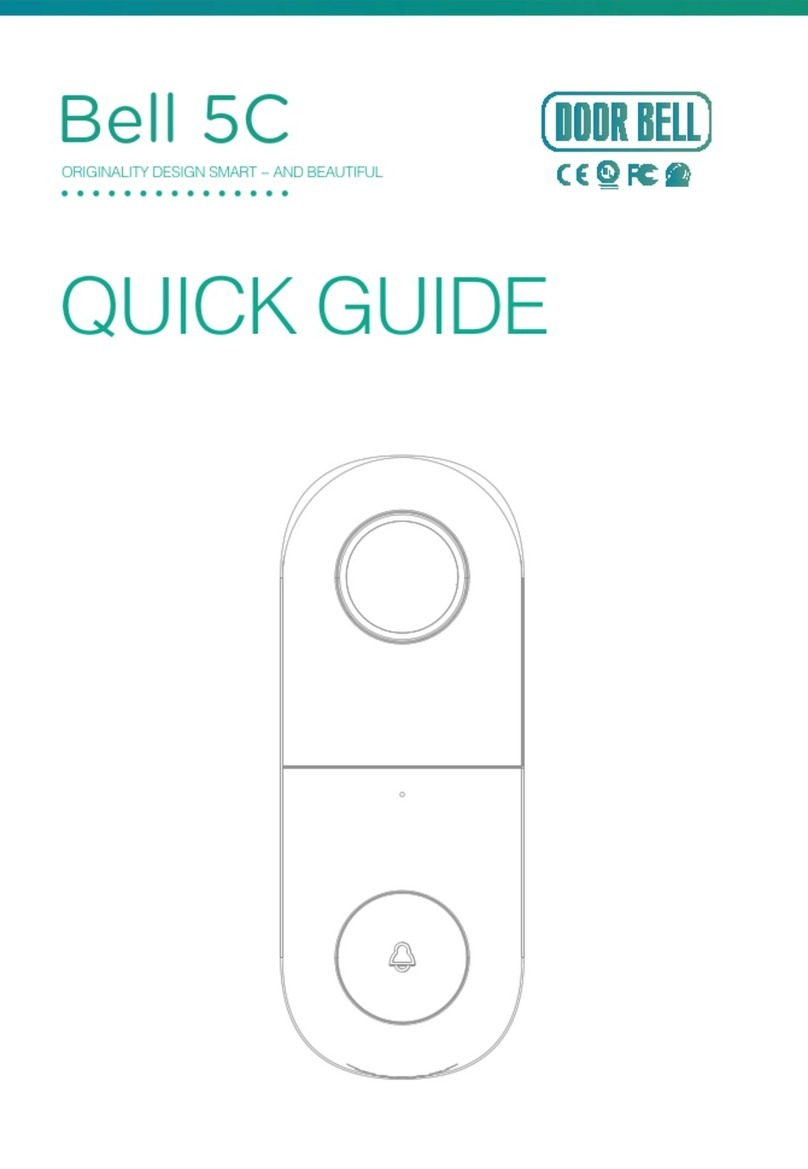Novanta ATI Axia90 F User manual

Manual, F/T Sensor, Axia90
Document #9620-05-B-Axia90-03
Pinnacle Park • 1031 Goodworth Drive •Apex, NC 27539 • Tel:+1 919.772.0115 • Fax:+1 919.772.8259 • www.ati-ia.com
B-2
Foreword
Information contained in this document is the property of ATI IndustrialAutomation, Inc. and shall not be reproduced in
whole or in part without prior written approval of ATI IndustrialAutomation, Inc. The information herein is subject to
change without notice and should not be construed as a commitment on the part of ATI IndustrialAutomation, Inc. This
manual is periodically revised to reect and incorporate changes made to the F/T system.
ATI IndustrialAutomation, Inc. assumes no responsibility for any errors or omissions in this document.
Copyright © (2022) by ATI IndustrialAutomation, Inc., Apex, North Carolina USA. All Rights Reserved.
Published in the USA.
ATI F/T Sensing Systems are considered components/ semi-nished goods intended for use in larger system/
device/ nished good.
In consideration that ATI Industrial Automation, Inc. (ATI) products are intended for use with robotic and/or automated
machines, ATI does not recommend the use of its products for applications wherein failure or malfunction of aATI
component or system threatens life or makes injury probable. Anyone who uses or incorporates ATI components within
any potentially life threatening system must obtain ATI’s prior consent based upon assurance to ATI that a malfunction
of ATI’s component does not pose direct or indirect threat of injury or death, and (even if such consent is given) shall
indemnify ATI from any claim, loss, liability, and related expenses arising from any injury or death resulting from use of
ATI components.
All trademarks belong to their respective owners.
Note:
Please read the manual before calling customer service, and have the following
information available:
1. Serial number (e.g., FT01234)
2. Sensor model (e.g., Axia90-M50)
3. Calibration (e.g., US-15-50, SI-65-6, etc.)
4. Accurate and complete description of the question or problem
5. Computer and software information (operating system, PC type, drivers, application
software, and other relevant information about the application’s conguration)
Be near the F/T system when calling (if possible).
Please contact an ATI representative for assistance, if needed:
Sale, Service and Information about ATI products:
ATI Industrial Automation
1031 Goodworth Drive
Apex, NC 27539 USA
www.ati-ia.com
Tel: +1.919.772.0115
Fax: +1.919.772.8259
Application Engineering
Tel: +1.919.772.0115, Extension 511
Fax: +1.919.772.8259
E-mail: [email protected]
24/7 Support: +1 855 ATI-IA 00 (+1 855-284-4200)

Manual, F/T Sensor, Axia90
Document #9620-05-B-Axia90-03
Pinnacle Park • 1031 Goodworth Drive •Apex, NC 27539 • Tel:+1 919.772.0115 • Fax:+1 919.772.8259 • www.ati-ia.com
B-3
Table of Contents
Glossary........................................................................................................................................B-4
1. Safety......................................................................................................................................B-6
1.1 ExplanationofNotications..................................................................................................... B-6
1.2 General Safety Guidelines........................................................................................................ B-6
1.3 Safety Precautions.................................................................................................................... B-7
2. Product Overview..................................................................................................................B-8
3. Installation ...........................................................................................................................B-10
3.1 Interface Plates........................................................................................................................ B-10
3.2 Routing the Cable.................................................................................................................... B-12
3.3 Cable Kits................................................................................................................................. B-15
3.4 Install the Sensor .................................................................................................................... B-16
3.5 Remove the Sensor................................................................................................................. B-18
3.6 Accuracy Check Procedure.................................................................................................... B-19
3.7 Detecting Sensitivity Changes............................................................................................... B-20
4. Operation .............................................................................................................................B-21
4.1 Sensor Environment............................................................................................................... B-21
4.2 Tool Transformation................................................................................................................ B-22
4.2.1 Avoid Overloading the Sensor During Tool Transformation...........................................B-24
4.2.2 Tool Transformation Functionality Through a Communication Interface.......................B-24
5. Maintenance.........................................................................................................................B-24
5.1 Periodic Inspection................................................................................................................. B-24
5.2 Periodic Calibrating ................................................................................................................ B-24
6. Troubleshooting ..................................................................................................................B-25
6.1 Basic Guidance for Troubleshooting .................................................................................... B-26
7. Specications ......................................................................................................................B-29
7.1 Environmental Conditions...................................................................................................... B-29
7.2 ElectricalSpecications ......................................................................................................... B-29
7.3 Calibration Range.................................................................................................................... B-29
7.4 Default Peak Values ................................................................................................................ B-29
8. Terms and Conditions of Sale............................................................................................B-30

Manual, F/T Sensor, Axia90
Document #9620-05-B-Axia90-03
Pinnacle Park • 1031 Goodworth Drive •Apex, NC 27539 • Tel:+1 919.772.0115 • Fax:+1 919.772.8259 • www.ati-ia.com
B-4
Glossary
Term Denition
Bias
Biasing is useful for eliminating the eects of gravity (tool weight) or other acting
forces. When the bias function is used, the software collects data for the forces
and torques that are currently acting on the sensor and use these readings as a
reference for future readings. Future readings will have this reference subtracted
from them before they are transmitted. Bias may also be referred to as “zero out”
or “tare”the sensor.
Calibration Denes a specic measurement or sensing range for a given sensor. Calibration
is also the process of measuring a transducer’s raw response to loads and
creating data used in converting the response to forces and torques.
Complex Loading Any load that is not purely in one axis.
Communication Interface
Versions
The software standard that the customer device uses to apply features to the
sensor and for the sensor to report data, for example: EtherCAT, RS422, and
Ethernet.
Coordinate Frame See Sensing Reference Frame Origin.
Data Rate How fast data can be output over a network.
Force A force is a push or pull action on an object caused by an interaction with
another object. Force = mass x acceleration.
FS Full-Scale, refers to the limits of a given calibration or sensing range.
F/T Force/Torque.
Fxy The resultant force vector comprised of components Fxand Fy.
Hysteresis A source of measurement error caused by the residual eects of previously
applied loads.
Interface Plate
A separate plate that attaches the sensor to another surface. Interface plates are
often used if the bolt pattern on the sensor doesn’t match the bolt pattern on the
robot arm or customer tooling. The interface plate has two bolt patterns, one on
either side of the plate. One side is for the sensor. The other side is for the robot
arm or customer tooling.
IP67 Ingress protection rating “67” designates protection against dust and submersion
under 1 m of fresh water.
Master Device A customer supplied device such as a personal computer, robot, or
programmable logic controller (PLC) that is compatible a specic communication
interface.
Measurement
Uncertainty
Commonly referred to as “accuracy”, “measurement uncertainty” is the worst-
case error between the measured value and the true load. The measurement
uncertainty is specied as a percentage of the full-scale measurement range for
a given sensor model and calibration size. This value takes into account multiple
sources of error. The sensor’s calibration certicate lists the measurement
uncertainty percentage. For more information, refer to Section 2.2: Measurement
Uncertainty in the Frequently Asked Questions (FAQ) document located at:
https://www.ati-ia.com/library/documents/FT_FAQ.pdf.
Mechanical Coupling When an external object such as customer tooling or utilities contacts a sensor’s
surface between the sensor’s mounting side and tool side.
Mounting Interface Plate An interface plate that attaches the sensor to a xed surface like a robot arm.
N/A Not Applicable
Overload The condition where more load is applied to the transducer than it can measure.
This will result in saturation.

Manual, F/T Sensor, Axia90
Document #9620-05-B-Axia90-03
Pinnacle Park • 1031 Goodworth Drive •Apex, NC 27539 • Tel:+1 919.772.0115 • Fax:+1 919.772.8259 • www.ati-ia.com
B-5
Term Denition
P/N Part Number
Power Cycle When a user removes and then restores power to a device.
Resolution The smallest change in load that can be measured. Resolution is usually much
smaller than accuracy.
Sample Rate How fast the ADCs are sampling inside the unit.
Saturation The condition where the transducer or data acquisition hardware has a load or
signal outside of its sensing range.
Sensing Reference
Frame Origin The point on the sensor from which all forces and torques are measured.
Sensor The component that converts a detected load into electrical signals.
Sensor System (or
conguration)
The entire assembly consisting of a sensor body and a system interface to
translate force and torque signals into a specic communication
interface/protocol.
Tool Interface Plate An interface plate that attaches the customer’s tooling to the tooling side
(sensing side) of the sensor.
Torque The application of a force through a lever or moment arm that causes something
to want to turn. For example, a user applies torque to a screw to make it turn.
Torque = force x moment arm length.
Txy The resultant torque vector comprised of components Txand Ty.

Manual, F/T Sensor, Axia90
Document #9620-05-B-Axia90-03
Pinnacle Park • 1031 Goodworth Drive •Apex, NC 27539 • Tel:+1 919.772.0115 • Fax:+1 919.772.8259 • www.ati-ia.com
B-6
1. Safety
The safety section describes general safety guidelines to be followed with this product, explanations of the
notications found in this manual, and safety precautions that apply to the product. Product specic notications
are imbedded within the sections of this manual (where they apply).
1.1 ExplanationofNotications
These notications are used in all of ATI manuals and are not specic to this product. The user should heed
all notications from the robot manufacturer and/or the manufacturers of other components used in the
installation.
DANGER: Notication of information or instructions that if not followed will result in
death or serious injury. The notication provides information about the nature of the
hazardous situation, the consequences of not avoiding the hazard, and the method for
avoiding the situation.
WARNING: Notication of information or instructions that if not followed could result
in death or serious injury. The notication provides information about the nature of the
hazardous situation, the consequences of not avoiding the hazard, and the method for
avoiding the situation.
CAUTION: Notication of information or instructions that if not followed could result
in moderate injury or will cause damage to equipment. The notication provides
information about the nature of the hazardous situation, the consequences of not
avoiding the hazard, and the method for avoiding the situation.
NOTICE: Notication of specic information or instructions about maintaining, operating,
installing, or setting up the product that if not followed could result in damage to equipment. The
notication can emphasize, but is not limited to: specic grease types, best operating practices,
and maintenance tips.
1.2 General Safety Guidelines
The customer should verify that the sensor is rated for the maximum load and torque expected during
operation. Because static forces are less than the dynamic forces from the acceleration or declaration of the
robot, be aware of the dynamic loads caused by the robot.

Manual, F/T Sensor, Axia90
Document #9620-05-B-Axia90-03
Pinnacle Park • 1031 Goodworth Drive •Apex, NC 27539 • Tel:+1 919.772.0115 • Fax:+1 919.772.8259 • www.ati-ia.com
B-7
1.3 Safety Precautions
CAUTION: Modifying or disassembly of the sensor could cause damage and void
the warranty. Use the supplied mounting interface plate and the provided tool side
mounting bolt pattern to mount the sensor to the robot and customer tooling to the
sensor. For more information, refer to the customer drawings.
CAUTION: Probing openings in the sensor causes damage to the instrumentation.
Avoid prying into the openings of the sensor.
CAUTION: Do not overload the sensor. Exceeding the single-axis overload values of
the sensor causes irreparable damage.
CAUTION: The sensor should be protected from impact and shock loads that
exceed rated ranges during transportation as the impacts can damage the
sensor’s performance. Refer to Section7—Specications for more information
about rated ranges.

Manual, F/T Sensor, Axia90
Document #9620-05-B-Axia90-03
Pinnacle Park • 1031 Goodworth Drive •Apex, NC 27539 • Tel:+1 919.772.0115 • Fax:+1 919.772.8259 • www.ati-ia.com
B-8
2. Product Overview
The Axia90 Force/Torque (F/T) sensor detects six components of force and torque (Fx \ Fy \ Fz\ Tx\ Ty\ Tz) that are
applied to the tool side of the sensor. The sensor communicates this data to a device (such as a personal computer,
robot, or PLC). The ATI Axia-series product line differs from the other (non-Axia) ATI F/T sensor models. Thus,
the Axia sensors have different options and available features. The Axia-series force/torque sensors are available in
several different payload and communication interface versions. For more information about the communication
interface, refer to the applicable ATI Axia sensor manual in Table 2.1.
The sensor’s mounting side attaches to a rigid xture or robot. The robot mounting side of the sensor has a 81.065
mm diameter bolt circle (BC) for (6) M4 socket head cap screws and (2) 3 mm slip-t dowel pin holes. The tool
side attaches to the customer tooling. The tool side has a 50 mm BC pattern with (7) M6 tapped holes, 6 mm slip-t
dowel pin hole, and a 31.5 mm recess. For more information on the mounting patterns, refer to the ATI Axia sensor
customer drawing. If the sensor does not have the same bolt pattern as the mounting or tool sides, use interface
plates; refer to Section 3.1—Interface Plates. The sensor is IP67 rated.
An M8 8-pin male connector is for power and communication. On the side of the sensor, LEDs indicate the sensor’s
operational state. For the connector pin assignments on the sensor and cables and more information about the
LEDs, refer to the applicable ATI communication interface manual in Table 2.1.
The ATI Axia90 sensor customer drawing is available on the ATI website: https://www.ati-ia.com/app_content/
Documents/9630-05-0007.auto.pdf.
Figure 2.1—Axia90 F/T Sensor
communication and status LEDs
M8, 8-pin, male connector
for power and communication
Tool side
for customer tooling
Mounting side
to robot or fixture

Manual, F/T Sensor, Axia90
Document #9620-05-B-Axia90-03
Pinnacle Park • 1031 Goodworth Drive •Apex, NC 27539 • Tel:+1 919.772.0115 • Fax:+1 919.772.8259 • www.ati-ia.com
B-9
For more information on the electrical and software features of a specic communication interface version and the
applicable cable, refer to the ATI manual in the following table:
Table 2.1—ATI Communication/Software Manual Reference
Sensor Model
ATI P/N Communication
Type ATI Cable P/N Refer to the ATI Manual
9105-NET-
Axia90-M50 Ethernet 9105-C-ZC27-ZC28-41
9105-C-ZC28-U-RJ45S-x
ATI F/T Ethernet Axia manual
(ATI document #9620-05-C-Ethernet Axia)
9105-ECAT-
Axia90-M50 EtherCAT 9105-C-ZC27-ZC28-41
9105-C-ZC28-U-RJ45S-x
ATI F/T EtherCAT Axia manual
(ATI document #9620-05-C-EtherCAT Axia)
9105-RS422-
Axia90-M50 RS422 9105-C-ZC27-ZC28-41ATI F/T RS422 Axia manual
(ATI document #9620-05-C-RS422 Axia)
9105-RS485-
Axia90-M50 RS485 9105-C-ZC27-ZC28-41,2 ATI F/T Serial Axia manual4,
Sections 4, 5, and 6
(ATI document #9610-05-Serial Axia)
Note:
1. Included in 9105-CKIT-ZC27-ZC28-X refer to Table 3.2.
2. Customers must use their own RS422 serial cable with a DB9 or USB connector to the ATI sensor cable.
3. This ATI manual references the Axia80 sensor, but the software interface concepts still apply
to the Axia90 sensor.

Manual, F/T Sensor, Axia90
Document #9620-05-B-Axia90-03
Pinnacle Park • 1031 Goodworth Drive •Apex, NC 27539 • Tel:+1 919.772.0115 • Fax:+1 919.772.8259 • www.ati-ia.com
B-10
3. Installation
WARNING: Performing maintenance or repair on the sensor when circuits (for example:
power, water, and air) are energized could result in death or serious injury. Discharge and
verify all energized circuits are de-energized in accordance with the customer’s safety
practices and policies.
CAUTION: Using fasteners that exceed the customer interface depth penetrates the body of
the sensor, damages the electronics, and voids the warranty. For more information, refer to
the customer drawings.
CAUTION: Thread locker applied to fasteners must not be used more than once. Fasteners
might become loose and cause equipment damage. Always apply new thread locker when
reusing fasteners.
CAUTION: Avoid damage to the sensor from electrostatic discharge. Ensure proper
grounding procedures are followed when handling the sensor or cables connected to the
sensor. Failure to follow proper grounding procedures could damage the sensor.
CAUTION: Do not apply excessive force to the sensor and cable connector during
installation, or damage will occur to the connectors. Align the keyway on the sensor and cable
connector during installation to avoid applying excessive force to the connectors.
Keyway on the
cable connector.
Keyway on the
sensor connector.
3.1 Interface Plates
The sensor’s mounting side attaches to a surface like the robot arm, and the sensor’s tool side attaches to the
customer tooling. The pattern on the Axia90 tool side is compatible with ISO 9409-1-50-4-M6 bolt pattern.
Therefore, if customer tooling mounts to the sensor’s tool side with a 50 mm bolt circle and (4) or (7) M6
bolts, an interface plate on the tool side of the sensor is not required. ATI can supply robot mounting kits that
include a mounting interface plate and fasteners; for more information, contact ATI (refer to page B-2). If
the customer chooses to supply their own interface plates, refer to the following design guidelines and the
ATI Axia sensor customer drawing.
CAUTION: Incorrect installation of interface plates can prevent the F/T sensor from
functioning properly.

Manual, F/T Sensor, Axia90
Document #9620-05-B-Axia90-03
Pinnacle Park • 1031 Goodworth Drive •Apex, NC 27539 • Tel:+1 919.772.0115 • Fax:+1 919.772.8259 • www.ati-ia.com
B-11
If the customer chooses to design and build an interface plate, consider the following points:
• The interface plate should include bolt holes for mounting fasteners as well as a dowel pin and boss for
accurate positioning to the robot.
• The thickness of the interface plate must provide sufcient thread engagement for the
mounting fasteners.
• The mounting fasteners should not interfere with the internal electronics of the sensor. For thread
depth, mounting patterns, and other details, refer to the ATI Axia sensor customer drawing.
• Do not use dowel pins that exceed length requirements and prevent interface plate from mating ush
with the robot. Fasteners that exceed length requirements create a gap between the interfacing surfaces
and cause damage.
• The interface plate must be as strong or stronger than the sensor so that maximum force and torque
values applied to the sensor do not distort the interface plate. For these force and torque values, refer to
Section 7—Specications.
• The interface plate must provide a at and parallel mounting surface for the sensor.
Figure 3.1 —Interface Plate(s)
locating dowel pin
(customer supplied)
MAP (Mounting Adapter Plate)
(2) 3 mm locating dowel pin
Mounting Fasteners
F/T Axia90 Sensor
31.5 mm diameter
6 mm hole
for customer interface
(not shown)
(6) M4 mounting fasteners
6 mm locating dowel pin
(customer supplied)
locating boss
M6 mounting fasteners
(customer supplied)
customer tooling
locating boss
robot arm

Manual, F/T Sensor, Axia90
Document #9620-05-B-Axia90-03
Pinnacle Park • 1031 Goodworth Drive •Apex, NC 27539 • Tel:+1 919.772.0115 • Fax:+1 919.772.8259 • www.ati-ia.com
B-12
3.2 Routing the Cable
The routing and bending radius of the cable depends upon the customer application. Unlike motionless
applications, where the cable is in a static condition, dynamic applications subject the cable to a repetitive
motion. For dynamic applications, restrain the cable at a distance that does not expose and damage the
sensor’s cable connection from the robot’s repetitive motion.
Figure 3.2—Routing of the Sensor Cable
Mounting
Interface Plate
Sensor Cable
F/T Sensor
Restrain cable to keep
repetitive motion from
affecting the cable
connection.
Robot Arm
CAUTION: Subjecting the connector to the repetitive motion will cause damage to the
connector. Restrain the cable close to the connector so that the repetitive motion of the
robot does not interfere with the cable connector.
CAUTION: Improper cable routing may cause injury to personnel, poor functionality
of critical electrical lines, or damage to the equipment. The electrical line, especially
where attached to the sensor’s connector, must be routed to avoid stress failure, sharp
bends, or a disconnection from the equipment. Damage to the sensor or cable from
improper routing will void the warranty.

Manual, F/T Sensor, Axia90
Document #9620-05-B-Axia90-03
Pinnacle Park • 1031 Goodworth Drive •Apex, NC 27539 • Tel:+1 919.772.0115 • Fax:+1 919.772.8259 • www.ati-ia.com
B-13
For added stability, zip ties can be used to secure the cable to a mounting bracket (refer to the following
gure). The zip ties should never contact the cable jacket.
Figure 3.3—Use Zip Ties on the Connector (sensor shown for reference only)
(2) Zip ties stabilize and secure
the connector. The zip tie does
not contact the cable.
Route the sensor cable so that it is not stressed, pulled, kinked, cut, or otherwise damaged throughout the
full range of motion. Use a robot dresspack solution, if possible. Examples of how to route the cable, if a
dresspack is not available, are shown in the following gures and descriptions. Afx the cable by using hook
and loop straps or Velcro®straps; do not use cable ties or zip ties.
Figure 3.4—Use Hook and Loop or Velcro®Straps on the Cable
(sensor shown for reference only)
Allow enough slack in
the cable to allow full range
of motion for the robot arm.
Use hook and loop or Velcro®straps to restrain
the cable around the robot arm.

Manual, F/T Sensor, Axia90
Document #9620-05-B-Axia90-03
Pinnacle Park • 1031 Goodworth Drive •Apex, NC 27539 • Tel:+1 919.772.0115 • Fax:+1 919.772.8259 • www.ati-ia.com
B-14
CAUTION: Do not use cable ties or zip ties to bundle cables or restrain the cable
to the robot arm. Directly axing cable ties or zip ties to the cable jacket will
damage the cable. Use hook and loop or Velcro straps on the cable jacket surfaces.
Examples of the incorrect and correct methods to restrain or bundle cables are in the
following pictures:
USE Velcro
®
straps to restrain
the cable around the robot arm.
DO NOT USE zip ties to restrain
the cable around the robot arm.
INCORRECT CORRECT
USE Velcro
®
straps
to bundle cables.
DO NOT USE zip ties
to bundle cables.
CAUTION: Do not damage or crush the cable by over tightening the
straps on the cable.
CAUTION: When routing the cables, do not bend less than the minimum bending
radius specied in Table 3.1. Abend radius too small causes the cable to fail from
fatigue of the robot’s repetitive motion.
Table 3.1—Sensor Cable Bending Radius and Dynamic Twist Angle
Cable Part Number Cable
Diameter
mm (in)
Static
Bending
Radius
(at room
temperature)
Dynamic
Bending
Radius
(at room
temperature)
Dynamic Cable Twist
Angle per Unit Length
mm in mm in
9105-C-ZC27-ZC28-X2,3 7 (0.28) 35 1.4 70 2.8 180°/m or 55°/ft
9105-C-ZC28-U-RJ45S-X26 (0.24) 25 1 50 2
Notes:
1. Temperature aects cable exibility. ATI recommends increasing the minimum dynamic bending radius for
lower temperatures.
2. The X in the part number represents the cable length. For more information, contact ATI.
3. Available in an ATI kit; refer to Table 3.2.
4. For information specic to the cable part number, refer to the applicable manual in Table 2.1.

Manual, F/T Sensor, Axia90
Document #9620-05-B-Axia90-03
Pinnacle Park • 1031 Goodworth Drive •Apex, NC 27539 • Tel:+1 919.772.0115 • Fax:+1 919.772.8259 • www.ati-ia.com
B-15
3.3 Cable Kits
For images of the sensor support bracket and P-clip, refer to Figure 3.2 and Figure 3.5.
Table 3.2—Cable Kit 9105-CKIT-ZC27-ZC28-X
Part Number Description Quantity
9105-C-ZC27-ZC28-4 8-pin M12 connector to 8-pin M12 connector with a 4 m cable 1
9005-05-1078 (1) bracket, (1) M5 x 10 socket head cap screw, (1) M5 at
washer, and (1) tie 1
9005-05-1079 (1) P-clamp and (1) M5 x 10 socket head cap screw 1

Manual, F/T Sensor, Axia90
Document #9620-05-B-Axia90-03
Pinnacle Park • 1031 Goodworth Drive •Apex, NC 27539 • Tel:+1 919.772.0115 • Fax:+1 919.772.8259 • www.ati-ia.com
B-16
3.4 Install the Sensor
Parts required: Refer to Figure 3.5 and ATI Axia sensor customer drawing
Tools required: 3 mm and 4 mm hex key
Supplies required: Clean cloth, Loctite®242
1. Clean the mounting surfaces.
2. Use the mounting fasteners to attach the interface plate to the mounting surface.
NOTICE: When installing an interface plate:
• Screws must have a minimum thread engagement length of 4.5 mm. Maximum screw
thread engagement shall not exceed the threaded depth listed on the ATI Axia sensor
customer drawing.
• Unless otherwise specied, apply Loctite 242 to the (6) M4 socket head cap screws (class
12.9) so that the fasteners secure the sensor to the mounting plate.
3. Attach the mounting side of the sensor to the interface plate.
a. Secure the mounting side of the sensor to the interface plate with (6) M4 socket head cap screws
(class 12.9). Use a 3 mm hex key to tighten the fasteners 45 in-lbs (5.08 Nm).
4. Once the sensor is installed on the robot, the customer tooling can be installed.
NOTICE: The tool must not touch any other part of the sensor except the tool side; otherwise,
the sensor will not properly detect loads.

Manual, F/T Sensor, Axia90
Document #9620-05-B-Axia90-03
Pinnacle Park • 1031 Goodworth Drive •Apex, NC 27539 • Tel:+1 919.772.0115 • Fax:+1 919.772.8259 • www.ati-ia.com
B-17
Figure 3.5—Installation of the Sensor to the Robot
a P-clip for cable routing. The P-clip is either
customer supplied or included in ATI kit.
(6) M4 socket head cap screw
sensor cable
(Shown for reference only.
Cables may differ depending
on the software communication
interface and selected cable.)
mounting fastener to the robot
locating dowel pin
interface plate (robot side)
robot arm
tool side for the customer tooling
(2) 3 mm locating dowel pin
Axia90 F/T Sensor
Use this M5X0.8 10 mm threaded hole to attach
NOTICE: For the LED outputs that indicate the sensor’s operational condition, refer to the
applicable manual listed in Table 2.1.
5. Connect the cable(s) to the sensor and customer application. For the sensor and cable connector pinout
information, refer to the applicable manual in Table 2.1.
6. After connecting the cable to the customer interface, set up the sensor communication interface
software; for additional information about the software communication interface, refer to the applicable
manual in Table 2.1.
7. Properly restrain and route the cable (refer to Section 3.2—Routing the Cable). If using an ATI cable kit:
a. Above the sensor connector, secure the bracket to the interface plate. Insert the M5 screw through
the at washer. Use a 4 mm hex key to tighten the M5 socket head cap screw.
b. Use the tie in the kit to secure the connector to the bracket (refer to Figure 3.3).
c. Secure the P-clip to the interface plate (refer to Figure 3.2). Use a 4 mm hex key to tighten the M5
socket head cap screw.
d. Route the cable (refer to Section 3.2—Routing the Cable).
8. After installation is complete, the sensor is ready for an accuracy check (refer to Section 3.6—Accuracy
Check Procedure).
9. Safely start normal operation.

Manual, F/T Sensor, Axia90
Document #9620-05-B-Axia90-03
Pinnacle Park • 1031 Goodworth Drive •Apex, NC 27539 • Tel:+1 919.772.0115 • Fax:+1 919.772.8259 • www.ati-ia.com
B-18
3.5 Remove the Sensor
Tools required: 3 mm hex key
1. Turn off all energized circuits, for example: electrical.
2. Remove the cable from the sensor.
3. Supporting the customer tooling, remove the customer supplied screws that attach the customer
tooling to the sensor.
4. Supporting the sensor, use a 3 mm hex key to remove the (6) M4 socket head cap screws that secure to
the sensor to the mounting interface plate or surface.
5. Remove the sensor

Manual, F/T Sensor, Axia90
Document #9620-05-B-Axia90-03
Pinnacle Park • 1031 Goodworth Drive •Apex, NC 27539 • Tel:+1 919.772.0115 • Fax:+1 919.772.8259 • www.ati-ia.com
B-19
3.6 Accuracy Check Procedure
Complete the following procedures after the initial installation of the sensor to the robot and once annually
for maintenance.
NOTICE: The mass on the tool side can be the weight of the tooling used in the application.
1. Attach a xed mass to the tool side of the F/T sensor:
a. Remove cables that form bridges between the sensor’s mounting and tool sides.
2. Power on the sensor. Allow a 30 minute warm-up time. Minimize external sources of
temperature change.
NOTICE: For optimal results, write a robot program to move the sensor and mass to each of the
following positions sequentially. At each position, the robot should pause to record the sensor’s
output. Avoid jogging the robot and waiting several minutes between each position.
3. Move the robot so that the sensor is in the following positions:
a. Record the sensor’s output, Fx, point n Fy, point n Fz, point n, at each point without biasing.
• Point 1: +Z up
• Point 2: +X up
• Point 3: +Y up
• Point 4: -X up
• Point 5: -Y up
• Point 6: -Z up
4. Calculate Fx, average , Fy, average , and Fz, average:
a. Use the following equations, to complete the calculations:
5. For each of the 6 points, complete the following calculation:

Manual, F/T Sensor, Axia90
Document #9620-05-B-Axia90-03
Pinnacle Park • 1031 Goodworth Drive •Apex, NC 27539 • Tel:+1 919.772.0115 • Fax:+1 919.772.8259 • www.ati-ia.com
B-20
6. The calculated tooling masses for all (6) points should deviate from each other by less than twice the
worst accuracy rating of the sensor.
• For example: the Axia90-M50 sensor’s rated accuracy is 2% the range on all axes. For a 1000 N Fxy
range and a 2000 N Fzrange, the allowable errors of any single data point would be ± 20 N Fxy and ±
40 N Fz respectively. Since Fz has the larger tolerance, then one data point could be + 40 N and another
data point could be - 40 N, for a total range (max-min) of 80 N error.
• In addition, the tooling mass should be within 80 N of the results of this test when it was performed
with a new sensor.
7. If this test fails, then the sensor should be returned to ATI for diagnosis or recalibration.
3.7 Detecting Sensitivity Changes
Sensitivity checking of the sensor can also be used to measure the Axia sensor’s health. Apply known loads
to the sensor and verifying the system output matches the known loads. For example, a sensor mounted to a
robot arm may have an end-effector attached to it. Use the following process to set a sensitivity value:
1. If the end-effector has moving parts, they must be moved in a known position.
a. Place the robot arm in an orientation that allows the gravity load from the end-effector to exert load
on many sensor output axes.
2. Record the output readings.
3. Position the robot arm to apply another load, this time causing the outputs to move far from the
earlier readings.
4. Record the second set of output readings.
5. Find the differences from the rst and second set of readings.
6. Use the differences as a sensitivity value.
Even if the sensitivity values vary from sample set to sample set, these values can be used to detect gross
errors. Either the resolved outputs or the raw sensor voltages may be used (the same must be used for all
steps of this process).
This manual suits for next models
1
Table of contents
Other Novanta Accessories manuals
Popular Accessories manuals by other brands
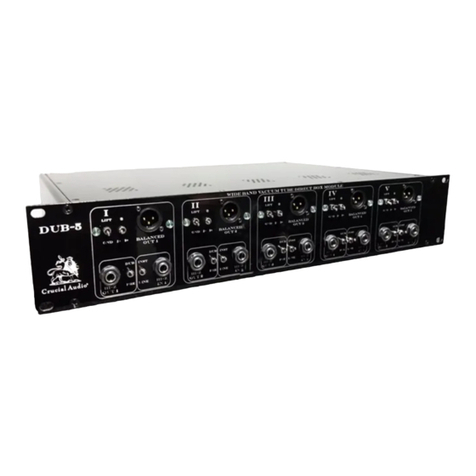
Crucial Audio
Crucial Audio DUB-5 operating instructions

Philio Technology Corporation
Philio Technology Corporation PSP06 manual
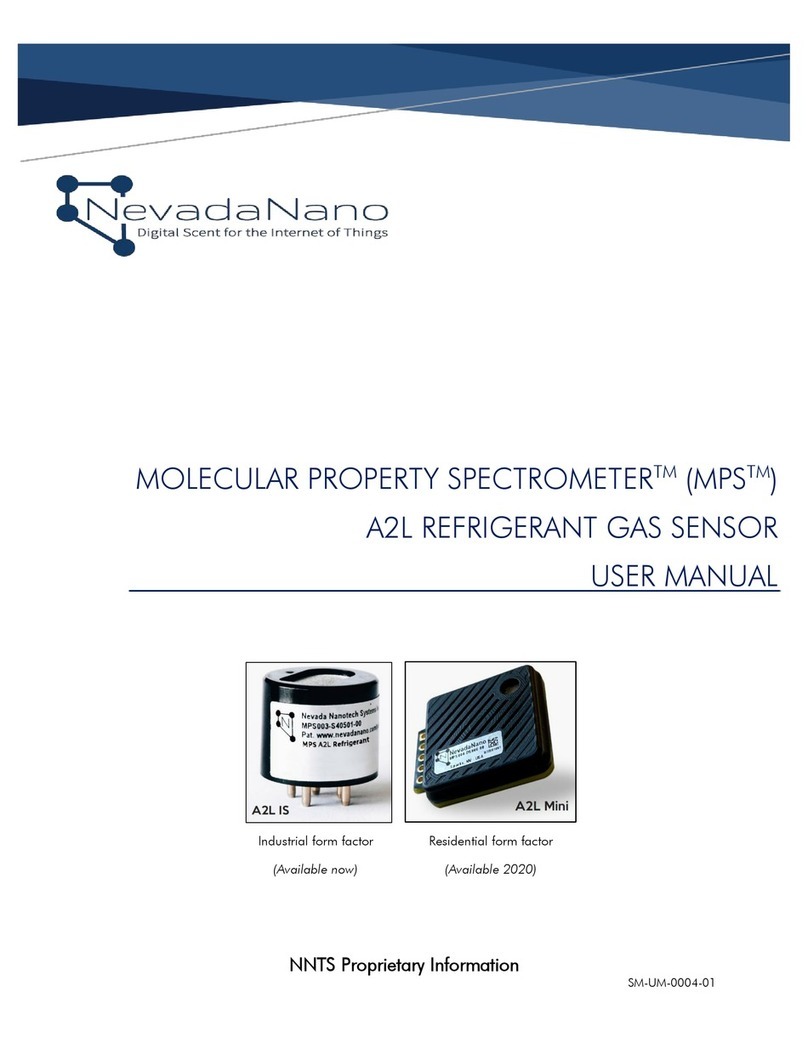
NEVADANANO
NEVADANANO MOLECULAR PROPERTY SPECTROMETER A2L Series user manual
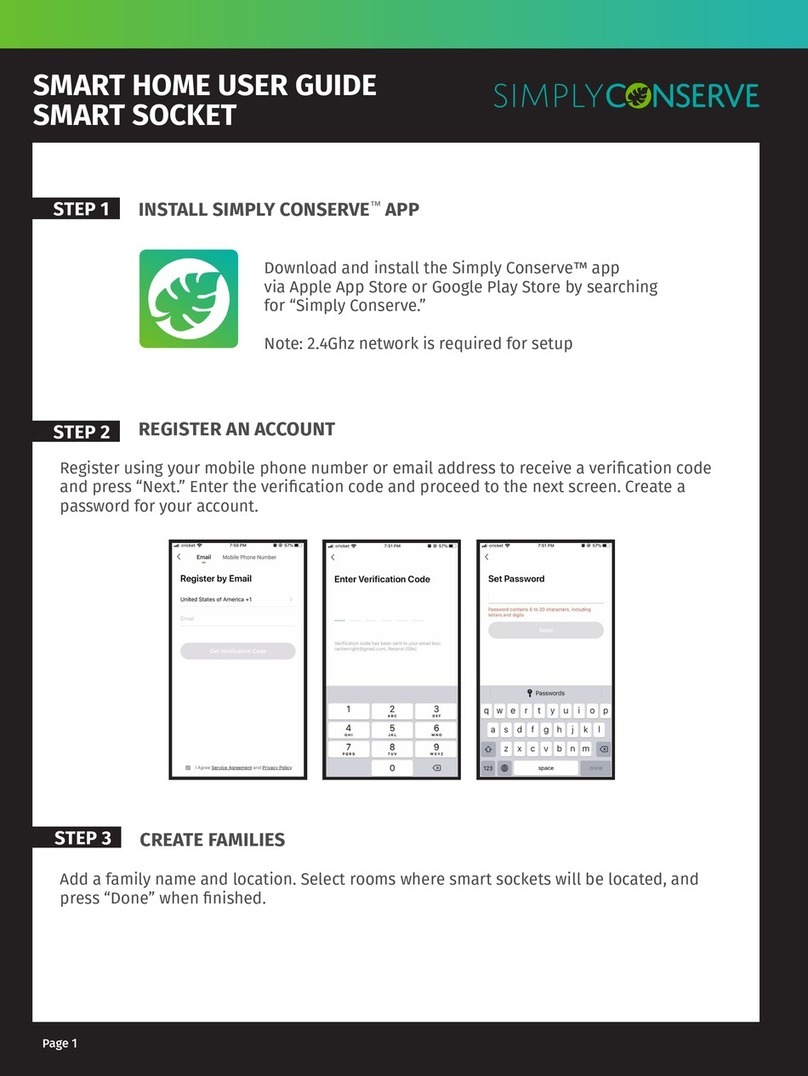
SIMPLY CONSERVE
SIMPLY CONSERVE SMART SOCKET user guide
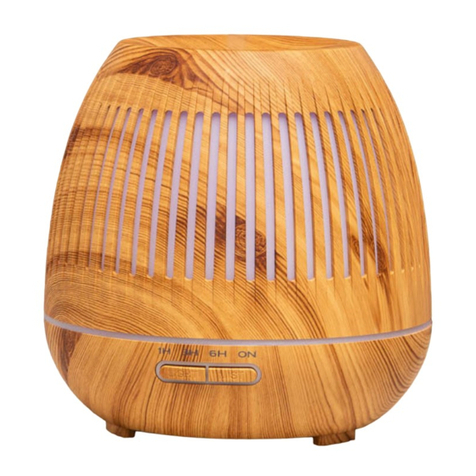
Aromateca
Aromateca ONYX Operation
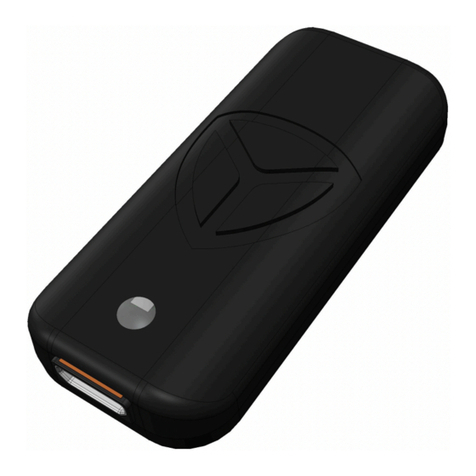
Yardarm
Yardarm Holster Aware user guide

